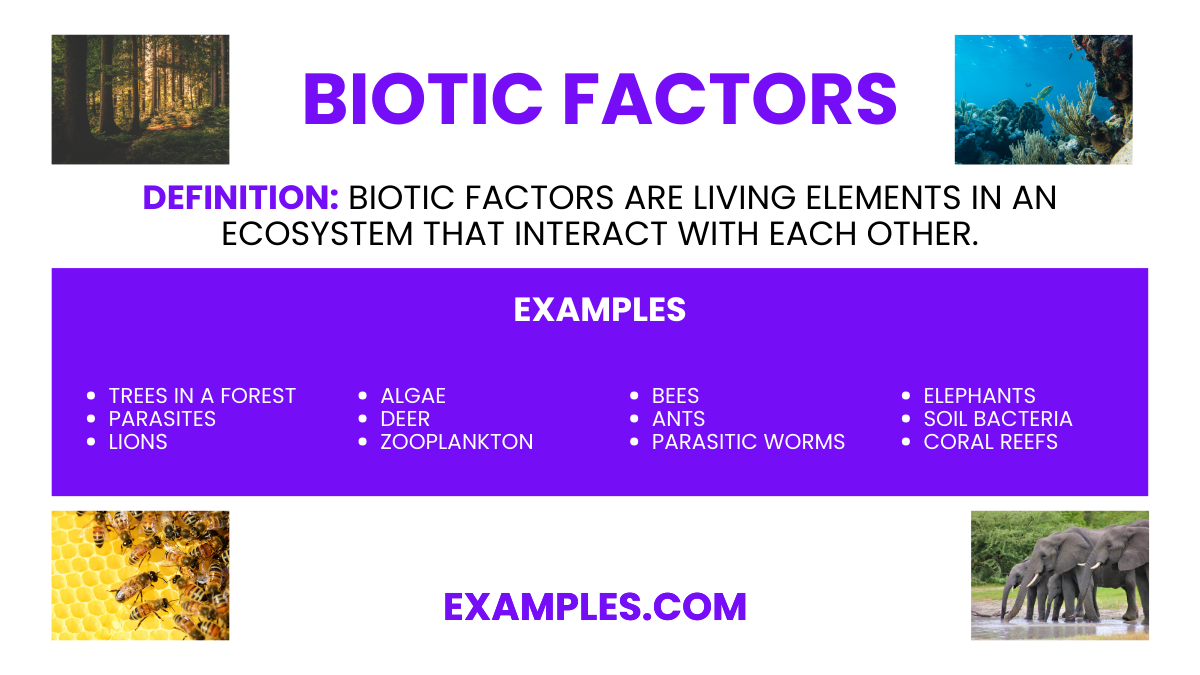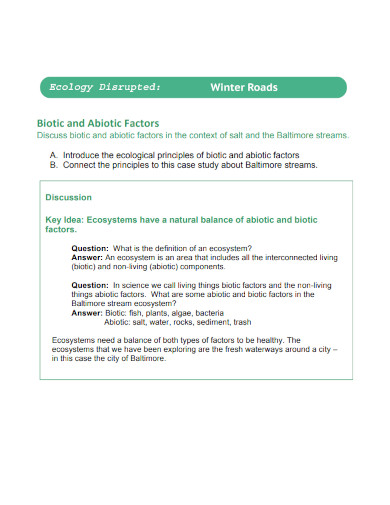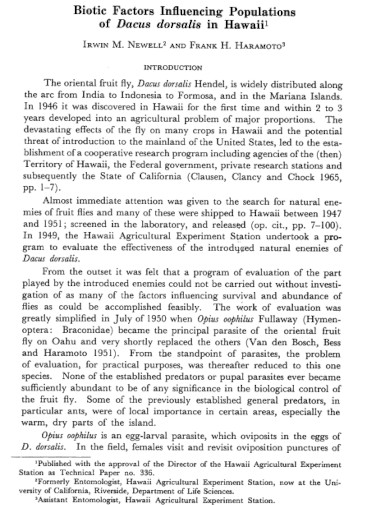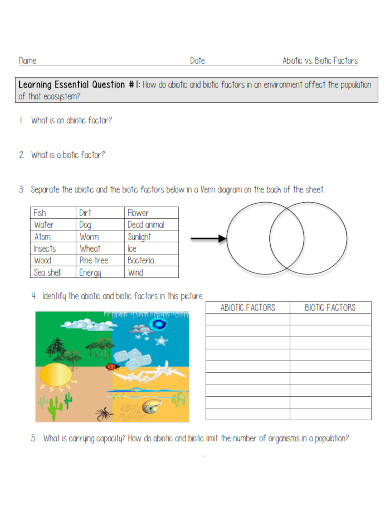Which of the following is a biotic factor in an ecosystem?
Water
Temperature
Grass
Soil


A Biotic factors encompass all living components of an ecosystem that affect the survival and development of organisms. This guide delves into the intricate web of interactions among plants, animals, and microorganisms, illustrating their roles within ecosystems. Ideal for both teachers and students, it provides a clear, engaging exploration of biotic relationships, showcasing examples that highlight the dynamic balance of natural environments. Through this lens, we gain insight into the foundational principles of ecology and the interconnectedness of life.
Biotic factors refer to the living elements of an ecosystem, such as plants, animals, and microorganisms, that influence the behavior, growth, and survival of organisms within their environment. These factors are critical in shaping ecosystems through various interactions, including predation, competition, and symbiosis, demonstrating the complex relationships that sustain biodiversity.
One of the best examples of biotic factors is pollination. This crucial process involves the transfer of pollen from one flower to another, typically facilitated by insects like bees, birds, or even mammals. Pollination exemplifies a mutualistic relationship, where pollinators receive nectar as food while enabling plants to reproduce, thereby sustaining countless ecosystems and food webs.
Biotic factors play a pivotal role in shaping ecosystems, influencing the survival, reproduction, and growth of organisms. These living elements include plants, animals, bacteria, fungi, and any other living beings that interact within an ecosystem. Understanding biotic factors is essential for studying ecological relationships and the balance of natural environments. This list presents 20 distinct examples of biotic factors, each with a brief description, showcasing the variety and complexity of life forms and their interactions in ecosystems.
Plants are the cornerstone of ecosystems, capturing sunlight to produce energy through photosynthesis. They provide oxygen and food, supporting life across the planet. Their presence and diversity are critical for the health and stability of ecosystems.
Herbivores, such as deer and rabbits, consume plants, acting as primary consumers in the food chain. They play a vital role in transferring energy from plants to higher trophic levels and influencing vegetation patterns and diversity.
Carnivores, including lions and hawks, feed on other animals. They help control population sizes, prevent overgrazing, and maintain ecological balance by removing sick and weak individuals, promoting biodiversity.
Omnivores, like bears and humans, eat both plants and animals. Their flexible diet allows them to occupy various niches within ecosystems, contributing to energy flow and nutrient cycles between trophic levels.
Decomposers, such as worms and mushrooms, break down dead organic matter, returning nutrients to the soil. They are essential for nutrient cycling, soil health, and the continuation of life by recycling biological material.
Pollinators, including bees and butterflies, transfer pollen between flowers, enabling plant reproduction. They are crucial for the survival of many plant species, food production, and biodiversity.
Parasites, such as tapeworms and fleas, live off other organisms, often causing harm. They influence host populations, potentially affecting ecosystem dynamics and encouraging biodiversity through evolutionary pressures.
Mutualistic relationships, like those between clownfish and anemones, benefit all involved. These interactions promote survival and reproduction, enhancing ecosystem diversity and stability.
Pathogens, including bacteria, viruses, and fungi, cause diseases in their hosts. They can significantly impact population dynamics, community structure, and the evolution of species through natural selection.
Species that compete for the same resources, such as food or space, influence each other’s survival. This competition drives evolutionary changes, niche differentiation, and biodiversity within ecosystems.
Predatory birds, or raptors, control the population of prey species, including rodents and insects. Their hunting efficiency helps maintain ecological balance and can indicate the health of their environment.
Zooplankton, small marine animals, are crucial for aquatic food webs, serving as a key food source for larger marine species. They also play a role in the ocean’s carbon cycle.
Coral organisms build reefs that provide habitat for a myriad of marine life, supporting biodiversity. They protect coastlines from erosion and are vital for marine ecosystems but are vulnerable to climate change.
These fungi form beneficial relationships with plant roots, improving water and nutrient absorption. They enhance plant growth and resilience, contributing to the productivity and health of ecosystems.
Birds like hummingbirds pollinate plants while feeding on nectar. They play a crucial role in the reproduction of many flowering plants, affecting plant distribution and ecosystem health.
Soil bacteria, such as those that fix nitrogen, are indispensable for making nutrients available to plants, promoting healthy plant growth and agricultural yields, crucial for ecosystem and human health.
Animals that disperse seeds, like birds and monkeys, ensure plant species spread and grow in new areas. This dispersal is vital for forest regeneration, plant diversity, and ecosystem resilience.
Algae are primary producers in aquatic environments, generating oxygen and serving as a food source for marine life. They play a foundational role in marine ecosystems but can cause problems when overabundant.
Invasive species, like kudzu or zebra mussels, disrupt local ecosystems by outcompeting native species. They can cause significant ecological and economic damage, altering habitat structures and food webs.
Endemic species are unique to specific locations, contributing to global biodiversity. Their existence can indicate the health of ecosystems but also makes them vulnerable to habitat changes and extinction.
Biotic factors are the living components of an ecosystem that significantly impact the environment and other organisms within it. These components are essential in shaping ecosystems, contributing to the biodiversity and the balance of various habitats. Understanding the components of biotic factors is crucial for comprehending ecological interactions and the dynamics of life systems. Here are eight key components of biotic factors, each accompanied by a succinct description:
Every ecosystem has several biotic factors that illustrate the various relationships of all living organisms that are in play. These factors outline the impact of each organism in a given location.
Begin by selecting an ecosystem that you would like to list out all of the biotic factors. This will provide you with contextual knowledge and information about the various abiotic factors that will facilitate the survival of the biotic factors in the ecosystem.
When you have selected the ecosystem of your choice, you must begin to list out all the living microbial bacteria and viruses living in the ecosystem. This will help provide you the knowledge of the various parasitic, mutualistic, and commensalistic relationships that are at play at the microbial level.
The biotic factors will also include the various species and subspecies of flora in the chosen ecosystem. You will need to write down all the various species and subspecies of the fauna in the given ecosystem.
The last part you will need to include and list out are the species and subspecies of all the animals and insects inside the ecosystem. This will provide you with salient information about the various interactions and cycles between all organisms that are at play in the given ecosystem.
Abiotic factors are all the factors that consist of various non-living components like the air, water, topology, soil, and temperature of a specific biome or a location in the biosphere. Biotic factors, on the other hand, refer to factors that consist of various living and organic components like the animals, the scavengers, the producers, and the flora of a specific biome or location in the biosphere. The main difference between these two factors is whether or not the factors these categories are describing are living, sentient, and organic. In conclusion, both abiotic factors and biotic factors contribute to the maintenance and survival of a specific ecosystem and will work hand-in-hand to ensure life is maintained.
The biotic factors include all the various living organisms that span the microbial community and the large predators. Not only do they include all the various species of animals and insects, but the biotic factors also include plants and trees. These factors all interact with one another to facilitate various cycles of life inside the biosphere. The biotic factors bring about cycles that will reintroduce nutrients into all the organisms in the biosphere, reintroduce water in both the atmosphere and the land, and the production and recycling of oxygen and carbon dioxide in the said biosphere. This means that biotic factors play a vital role in the survival and maintenance of all the living and non-living things in a given biosphere.
The food chain or food web refers to the overall cycle of energy and nutrients in a given ecosystem. This whole cycle outlines how energy is transferred from one trophic level to another, which begins with the producers creating food via the usage of sunlight and other abiotic factors. The biotic factors indicate all the species and subspecies of flora and fauna in a given location. The connection between these two scientific concepts hinges on the fact that both deal with living organisms. The biotic factor of the ecosystem will help give the overall names and number of living organisms participating in the food chain or food web.
The biotic factors refer to the biodiversity of various organisms in a given location. Knowing and understanding the biotic factors of a location can tell us the effect of a single organism on the whole community or network inside the said location. As a person living in the biosphere of our planet, it is very important to place significant importance on understanding how the removal or propagation of a single species will affect the overall ecosystem.

A Biotic factors encompass all living components of an ecosystem that affect the survival and development of organisms. This guide delves into the intricate web of interactions among plants, animals, and microorganisms, illustrating their roles within ecosystems. Ideal for both teachers and students, it provides a clear, engaging exploration of biotic relationships, showcasing examples that highlight the dynamic balance of natural environments. Through this lens, we gain insight into the foundational principles of ecology and the interconnectedness of life.
Biotic factors refer to the living elements of an ecosystem, such as plants, animals, and microorganisms, that influence the behavior, growth, and survival of organisms within their environment. These factors are critical in shaping ecosystems through various interactions, including predation, competition, and symbiosis, demonstrating the complex relationships that sustain biodiversity.
One of the best examples of biotic factors is pollination. This crucial process involves the transfer of pollen from one flower to another, typically facilitated by insects like bees, birds, or even mammals. Pollination exemplifies a mutualistic relationship, where pollinators receive nectar as food while enabling plants to reproduce, thereby sustaining countless ecosystems and food webs.
Biotic factors play a pivotal role in shaping ecosystems, influencing the survival, reproduction, and growth of organisms. These living elements include plants, animals, bacteria, fungi, and any other living beings that interact within an ecosystem. Understanding biotic factors is essential for studying ecological relationships and the balance of natural environments. This list presents 20 distinct examples of biotic factors, each with a brief description, showcasing the variety and complexity of life forms and their interactions in ecosystems.
Plants are the cornerstone of ecosystems, capturing sunlight to produce energy through photosynthesis. They provide oxygen and food, supporting life across the planet. Their presence and diversity are critical for the health and stability of ecosystems.
Herbivores, such as deer and rabbits, consume plants, acting as primary consumers in the food chain. They play a vital role in transferring energy from plants to higher trophic levels and influencing vegetation patterns and diversity.
Carnivores, including lions and hawks, feed on other animals. They help control population sizes, prevent overgrazing, and maintain ecological balance by removing sick and weak individuals, promoting biodiversity.
Omnivores, like bears and humans, eat both plants and animals. Their flexible diet allows them to occupy various niches within ecosystems, contributing to energy flow and nutrient cycles between trophic levels.
Decomposers, such as worms and mushrooms, break down dead organic matter, returning nutrients to the soil. They are essential for nutrient cycling, soil health, and the continuation of life by recycling biological material.
Pollinators, including bees and butterflies, transfer pollen between flowers, enabling plant reproduction. They are crucial for the survival of many plant species, food production, and biodiversity.
Parasites, such as tapeworms and fleas, live off other organisms, often causing harm. They influence host populations, potentially affecting ecosystem dynamics and encouraging biodiversity through evolutionary pressures.
Mutualistic relationships, like those between clownfish and anemones, benefit all involved. These interactions promote survival and reproduction, enhancing ecosystem diversity and stability.
Pathogens, including bacteria, viruses, and fungi, cause diseases in their hosts. They can significantly impact population dynamics, community structure, and the evolution of species through natural selection.
Species that compete for the same resources, such as food or space, influence each other’s survival. This competition drives evolutionary changes, niche differentiation, and biodiversity within ecosystems.
Predatory birds, or raptors, control the population of prey species, including rodents and insects. Their hunting efficiency helps maintain ecological balance and can indicate the health of their environment.
Zooplankton, small marine animals, are crucial for aquatic food webs, serving as a key food source for larger marine species. They also play a role in the ocean’s carbon cycle.
Coral organisms build reefs that provide habitat for a myriad of marine life, supporting biodiversity. They protect coastlines from erosion and are vital for marine ecosystems but are vulnerable to climate change.
These fungi form beneficial relationships with plant roots, improving water and nutrient absorption. They enhance plant growth and resilience, contributing to the productivity and health of ecosystems.
Birds like hummingbirds pollinate plants while feeding on nectar. They play a crucial role in the reproduction of many flowering plants, affecting plant distribution and ecosystem health.
Soil bacteria, such as those that fix nitrogen, are indispensable for making nutrients available to plants, promoting healthy plant growth and agricultural yields, crucial for ecosystem and human health.
Animals that disperse seeds, like birds and monkeys, ensure plant species spread and grow in new areas. This dispersal is vital for forest regeneration, plant diversity, and ecosystem resilience.
Algae are primary producers in aquatic environments, generating oxygen and serving as a food source for marine life. They play a foundational role in marine ecosystems but can cause problems when overabundant.
Invasive species, like kudzu or zebra mussels, disrupt local ecosystems by outcompeting native species. They can cause significant ecological and economic damage, altering habitat structures and food webs.
Endemic species are unique to specific locations, contributing to global biodiversity. Their existence can indicate the health of ecosystems but also makes them vulnerable to habitat changes and extinction.
Biotic factors are the living components of an ecosystem that significantly impact the environment and other organisms within it. These components are essential in shaping ecosystems, contributing to the biodiversity and the balance of various habitats. Understanding the components of biotic factors is crucial for comprehending ecological interactions and the dynamics of life systems. Here are eight key components of biotic factors, each accompanied by a succinct description:
Producers (Autotrophs): Organisms like plants and algae that produce their own food through photosynthesis, forming the base of the food web.
Consumers (Heterotrophs): Animals and insects that consume other organisms for energy, categorized into herbivores, carnivores, and omnivores.
Decomposers: Fungi and bacteria that break down dead matter, returning nutrients to the soil, vital for ecosystem health.
Detritivores: Organisms such as earthworms and certain insects that feed on dead plant and animal matter, aiding decomposition.
Pollinators: Bees, butterflies, and birds that transfer pollen between flowering plants, facilitating plant reproduction.
Parasites: Entities that live on or inside a host organism, deriving nutrients at the host’s expense, affecting host health.
Pathogens: Disease-causing viruses, bacteria, and fungi that can influence population dynamics and ecosystem stability.
Mutualistic Symbionts: Species that engage in a mutual relationship, where both parties benefit, such as coral and algae.

amnh.org
Details
File Format
Size: 46 KB

core.ac.uk
Details
File Format
Size: 74 KB

sciencewithmsbarton.files.wordpress.com
Details
File Format
Size: 44 KB
Every ecosystem has several biotic factors that illustrate the various relationships of all living organisms that are in play. These factors outline the impact of each organism in a given location.
Begin by selecting an ecosystem that you would like to list out all of the biotic factors. This will provide you with contextual knowledge and information about the various abiotic factors that will facilitate the survival of the biotic factors in the ecosystem.
When you have selected the ecosystem of your choice, you must begin to list out all the living microbial bacteria and viruses living in the ecosystem. This will help provide you the knowledge of the various parasitic, mutualistic, and commensalistic relationships that are at play at the microbial level.
The biotic factors will also include the various species and subspecies of flora in the chosen ecosystem. You will need to write down all the various species and subspecies of the fauna in the given ecosystem.
The last part you will need to include and list out are the species and subspecies of all the animals and insects inside the ecosystem. This will provide you with salient information about the various interactions and cycles between all organisms that are at play in the given ecosystem.
Abiotic factors are all the factors that consist of various non-living components like the air, water, topology, soil, and temperature of a specific biome or a location in the biosphere. Biotic factors, on the other hand, refer to factors that consist of various living and organic components like the animals, the scavengers, the producers, and the flora of a specific biome or location in the biosphere. The main difference between these two factors is whether or not the factors these categories are describing are living, sentient, and organic. In conclusion, both abiotic factors and biotic factors contribute to the maintenance and survival of a specific ecosystem and will work hand-in-hand to ensure life is maintained.
The biotic factors include all the various living organisms that span the microbial community and the large predators. Not only do they include all the various species of animals and insects, but the biotic factors also include plants and trees. These factors all interact with one another to facilitate various cycles of life inside the biosphere. The biotic factors bring about cycles that will reintroduce nutrients into all the organisms in the biosphere, reintroduce water in both the atmosphere and the land, and the production and recycling of oxygen and carbon dioxide in the said biosphere. This means that biotic factors play a vital role in the survival and maintenance of all the living and non-living things in a given biosphere.
The food chain or food web refers to the overall cycle of energy and nutrients in a given ecosystem. This whole cycle outlines how energy is transferred from one trophic level to another, which begins with the producers creating food via the usage of sunlight and other abiotic factors. The biotic factors indicate all the species and subspecies of flora and fauna in a given location. The connection between these two scientific concepts hinges on the fact that both deal with living organisms. The biotic factor of the ecosystem will help give the overall names and number of living organisms participating in the food chain or food web.
The biotic factors refer to the biodiversity of various organisms in a given location. Knowing and understanding the biotic factors of a location can tell us the effect of a single organism on the whole community or network inside the said location. As a person living in the biosphere of our planet, it is very important to place significant importance on understanding how the removal or propagation of a single species will affect the overall ecosystem.
Text prompt
Add Tone
10 Examples of Public speaking
20 Examples of Gas lighting
Which of the following is a biotic factor in an ecosystem?
Water
Temperature
Grass
Soil
Biotic factors in a forest ecosystem include:
Sunlight
Animals
Rocks
Air
Which of the following is NOT a biotic factor?
Fish
Bacteria
Minerals
Trees
What role do biotic factors play in an ecosystem?
Interact with other living organisms
Influence temperature
Control precipitation
Affect wind patterns
Which biotic factor is directly involved in the decomposition process?
Earthworms
Rocks
Water
Sunlight
Predation is a biotic interaction where:
Both species benefit
One species benefits, and the other is harmed
Both species are harmed
Both species are unaffected
Which of the following is an example of a biotic factor affecting plant growth?
Soil pH
Water availability
Herbivory
Light intensity
In a marine ecosystem, which of the following is a biotic factor?
Salinity
Coral
Water pressure
Ocean currents
The relationship between a parasite and its host is an example of:
Mutualism
Commensalism
Parasitism
Competition
Biotic factors in a grassland ecosystem include:
Wind
Temperature
Soil moisture
Grasshoppers
Before you leave, take our quick quiz to enhance your learning!

